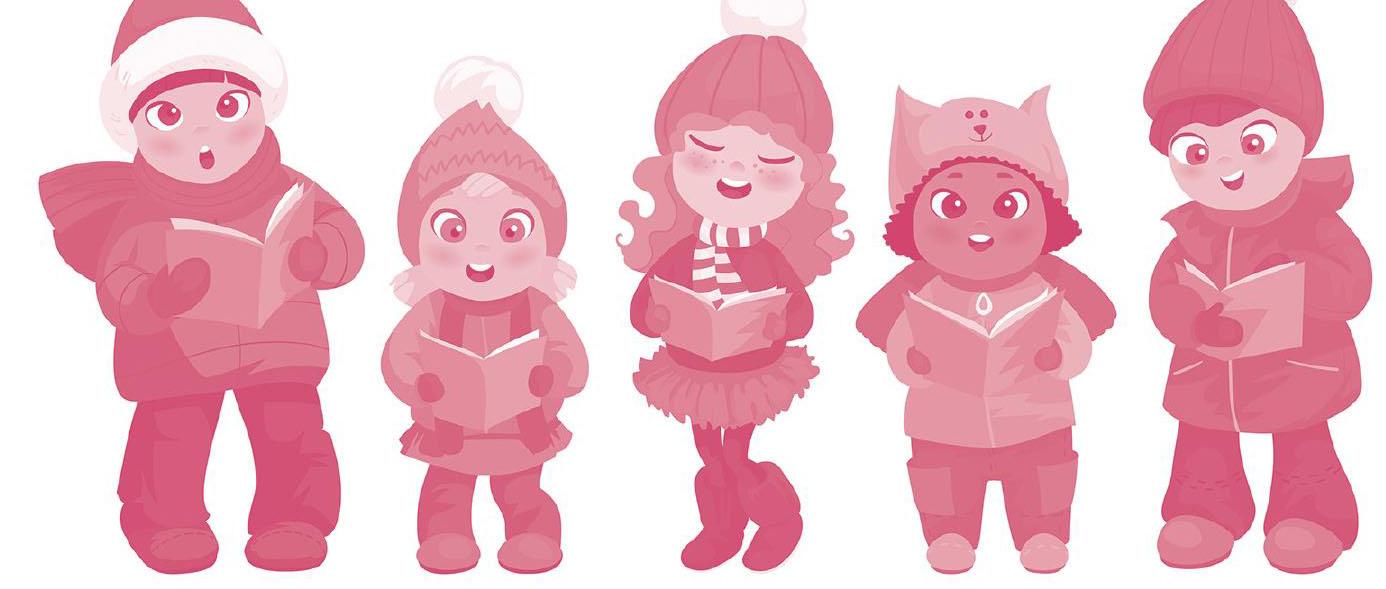重读狄更斯的《圣诞颂歌》
2020-12-28阿普里尔·奥斯汀
阿普里尔·奥斯汀


Each December I reread Charles Dickenss 1843 classic A Christmas Carol, and every time, for different reasons, it moves me deeply. I picked the book out of a remainder pile at one of the big chain bookstores in the 1990s, and it sat untouched on my shelf for years. I found it again about 10 years ago when searching for an antidote to the usual holiday frenzy of buying and doing.
A Christmas Carol, like Handels Messiah and Tchaikovskys The Nutcracker, is such a reliable holiday chestnut1 that its easy to take it for granted. Modern readers might find some parts of the book mawkish2 or too sentimental, but Dickens knew what he was doing. He understood how to wring sympathy from his Victorian audience, and how to influence public opinion toward the social reform that lies at the heart of his tale.
The emotions in A Christmas Carol are as outsize as any melodrama, but in Dickenss masterful hands, Im swept along, as eager as ever to witness Ebenezer Scrooges transformation from unfeeling miser to warmhearted benefactor. The three ghosts who haunt Scrooge on the night before Christmas are not only peddling cautionary tales, but also teaching him how to live more generously and with kindness toward his fellow beings.
Im in thrall to3 the words of the ghost of Scrooges old business partner, Jacob Marley, who comes to warn Scrooge of the arrival of the ghosts of Christmases past, present, and future. Scrooge asks Marley why he is shackled and receives the chilling reply: “I wear the chain I forged in life. I made it link by link, and yard by yard; I girded it on of my own free will, and of my own free will I wore it. Is its pattern strange to you?”
Like Scrooge, I find myself looking around, metaphorically speaking, to see if I, too, am weighted down by fetters of my own design. Its a powerful moment early in the story, and it sets a tone of self-reflection that is clearly warranted in the case of Scrooge. Marleys ghost is tormented by the “incessant torture of remorse” for the fact that in life he never lifted a hand to help others, so focused was he, like Scrooge, on making money. Now, he wants to save his partner from a similar fate.
Dickens is not only commenting on one particular old skinflint; hes indicting an entire society for failing to look after the poorest and neediest, especially children. Originally, Dickens had wanted to write a pamphlet called An Appeal to the People of England on Behalf of the Poor Mans Child but wisely discarded this idea, reasoning that people were more likely to absorb his message if it came wrapped in an entertaining story. He wrote A Christmas Carol in less than six weeks, and it was an immediate success. The book helped sway public attitudes toward the poor.
As a writer, I stand in awe of4 Dickenss prose. I enjoy its circumlocutions and switchbacks, the comic and the sly asides, and the boisterous excesses. But more than any other reason, I reread A Christmas Carol to feel. I want to run through the gamut of emotions that Scrooge experiences as he cowers in fear, weeps with remorse, and finally laughs with joy.
I want to be reminded that we all have the power to “render [others] happy or unhappy,” as Scrooge observes to the Ghost of Christmas Past. And I long to see my world through transformed eyes as Scrooge does when he goes for a walk on Christmas Day and finds that “everything could yield him pleasure. He had never dreamed that any walk—that anything—could give him so much happiness.” By the time Scrooge promises his long-suffering clerk, Bob Cratchit, a raise, and were apprised of5 the fact that Cratchits son Tiny Tim did not die as was foretold, theres not a dry eye in the house.
When I reread A Christmas Carol, Im transported miles away from to-do lists and shopping malls. I wont say that I escape the seasonal bustle for long, but when I return to it, I feel better for having spent time in pleasant company; Im more hopeful and perhaps a bit less jaded. As people said of the reformed Scrooge, “he knew how to keep Christmas well, if any man alive possessed the knowledge.”
每年12月,我都会重读查尔斯·狄更斯创作于1843年的經典作品《圣诞颂歌》,每次都因不同的缘由而深受触动。1990年代,我从一家大型连锁书店的一堆打折书中淘到了这本书,它在我的书架上静静地待了好些年。大约10年前,在寻找良方应对假日惯有的购物狂热和其他疯狂之举时,我再次发现了它。
像亨德尔的《弥赛亚》和柴可夫斯基的《胡桃夹子》一样,《圣诞颂歌》是一到圣诞节就会拿出来讲的故事,人们早把这当作理所当然的。现代读者可能会觉得这本书的某些部分无病呻吟或过于感伤,但狄更斯知道他在做什么。他知道如何想方设法从维多利亚时代的读者那里获取同情,也知道如何影响有关社会改革的公共舆论,这一改革就是其小说的核心。
《圣诞颂歌》中所表达的诸般情感跟任何一部情节剧一样强烈,但狄更斯娴熟的叙事技巧令我不禁跟随其笔触深入故事,我像以往一样渴望见证埃比尼泽·斯克鲁奇从冷酷无情的守财奴转变为乐善好施的大善人。圣诞前夜,三个精灵游荡在斯克鲁奇身边,他们不仅极力向他灌输警示性的故事,还教他生活中如何更慷慨大方及善待自己的同胞。
斯克鲁奇旧日的生意伙伴雅各布·马利的鬼魂现身,提醒斯克鲁奇三个圣诞精灵的到来,它们是过去之灵、现在之灵和未来之灵。马利鬼魂的话深深影响了我。斯克鲁奇问马利为什么戴着镣铐,得到的回答令人不寒而栗:“我戴的镣铐是生前我自己锻造的。是我一环一环、一码一码地做出来的;我是自愿做的,也是自愿戴上的。你觉得它的样子很奇怪吗?”
像斯克鲁奇一样,我不由自主四下看了看,打个比方,想看看自己是否也被自己设计的镣铐所束缚。这是故事之初的一个高光时刻,它设定了一种自我反省的基调,就斯克鲁奇的情形来说,这显然是有必要的。马利的鬼魂被“无休止的悔恨”折磨着,因为他生前从未伸手帮助过别人,就像斯克鲁奇一样,只专注于赚钱。现在,他想让老伙伴摆脱类似的命运。
狄更斯不仅是在评论某个老吝啬鬼;他在谴责整个社会没有照顾到最贫穷和最需要帮助的人,特别是孩子们。起初,狄更斯是想写一本小册子,名为《为穷人的孩子向英格兰人民呼吁》,但他明智地放弃了这个想法,他觉得,如果把自己的理念用一个有趣的故事包装起来,人们可能更容易接受。他不到六周就写完了这部《圣诞颂歌》,一经发表就大获成功。这本书促使公众改变了对穷人的态度。
作为一名作家,我对狄更斯的文字充满敬畏。我喜欢它的婉转曲折和跌宕起伏、它的滑稽有趣和诡秘旁白,还有它的喧闹放纵。但最重要的是,我重读《圣诞颂歌》是为了体悟。我想完整体验一回斯克鲁奇所经历的各种情绪,包括他恐惧的畏缩、悔恨的哭泣和最后的欢笑。
我想提醒自己,所有人都有能力“使他人快乐或不快乐”,正如斯克鲁奇对圣诞过去之灵所说的。我渴望透过变化的视角来观察我的世界,就像斯克鲁奇在圣诞节散步时发现,“一切都能带给他快乐。他做梦也没想到,随便散散步——做做事——都能带给他如此多的幸福”。到最后斯克鲁奇承诺给他长期受苦的职员鲍勃·克拉奇特加薪,而当我们得知克拉奇特的儿子小蒂姆没有如预言般死去,所有人都热泪盈眶。
重读《圣诞颂歌》时,我暂时忘却了待办事项清单和购物中心。我不想说自己长久摆脱了这种季节性忙碌,但当我重新投入那种忙碌时,我很庆幸曾与良伴共度美好时光;我对未来更充满希望,似乎也没那么疲惫了。正如人们谈到悔过自新的斯克鲁奇时所说的,“他比这世上任何人都更清楚该如何过好圣诞节”。
